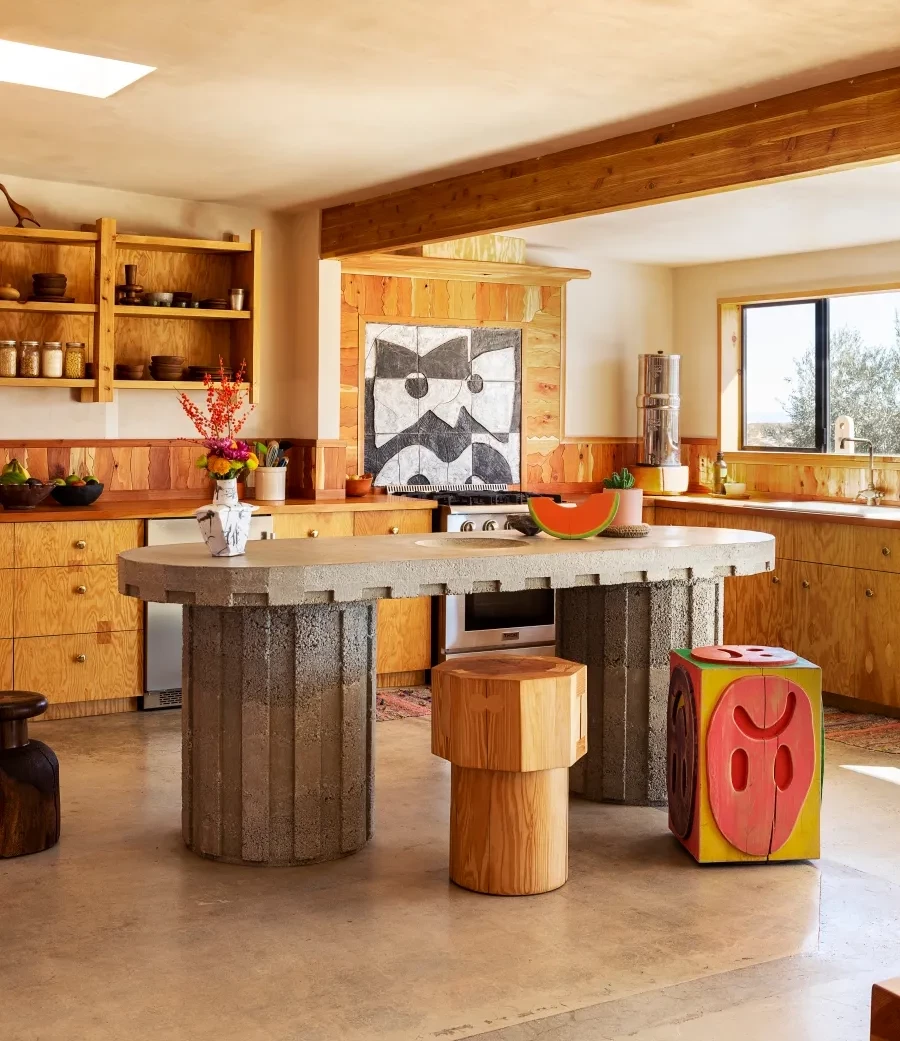
When 2022 began, nerves were still raw from months upon months of pandemic-induced stress. Today, things feel much more ebullient—including the anticipated design trends of 2023.
Turns out, many of us are ready to shed our sweatpants and homebody tendencies and reenter life with abandon. Few places reflect that shift more so than our home interiors. Though 2022 was all about soothing color palettes; soft, all-encompassing furniture; and a general sense of swaddling and serenity, 2023 is bringing bright, statement-making individualism.
“The market is finally veering away from more romantic styles like cottagecore and even the myriad variants of farmhouse,” says Tom Mirabile, founder of trend-forecasting agency Springboard Futures. “As we move past pandemic concerns and fears and toward newly complex realities, styles like these just feel too naïve and escapist.”
So now that we’re headed back to real life, what’s in the cards instead? Here are the interior design trends for 2023 that Mirabile and other experts predict will dominate.
A Burst of Color
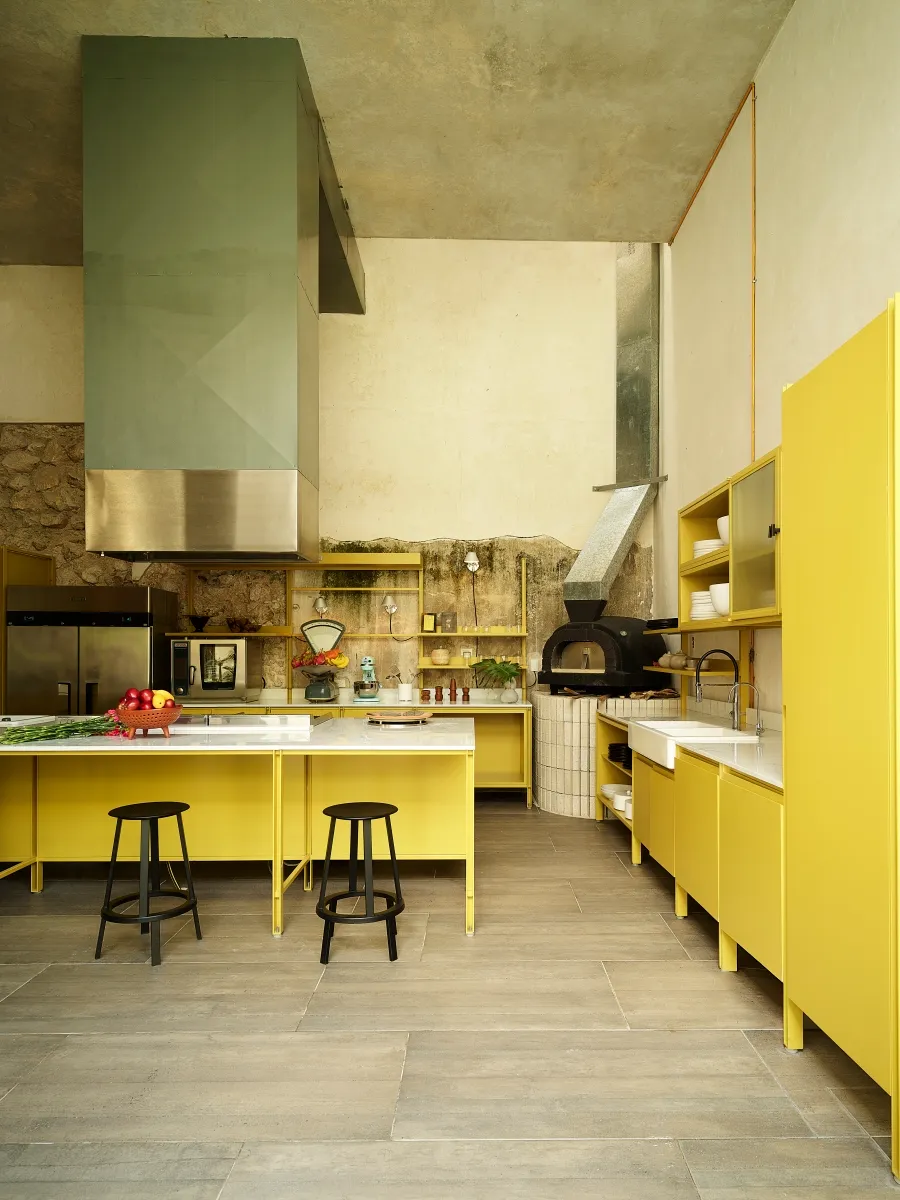
What’s more emblematic of a zest for life than a vibrant color palette? White and neutral interiors are falling out of favor for more cheerful hues, even if they just appear in accents.
“As society continues to glorify the individual, we see the minimalist ethos expand beyond simplicity and utility to the inclusion of more expressive elements,” Mirabile says. “In our shifting reality, minimalism is embracing a larger role as stylistic tabula rasa.”
“The all-white home decor is falling flat,” adds Lindsey Smecker, principal at ESP Trendlab. “It’s important to add contrast, warmth, and dimension to white spaces so as not to feel clinical.” To avoid any hospital-like vibes, Smecker says, people are opting for “warm chestnut or saturated ‘lived-in color’ in decor, rugs, and pillows to add elements of coziness and dimension.”
Patti Carpenter, principal and global trend ambassador at Carpenter + Company, is also seeing plenty of color in our future. “I am thrilled to see that, in the US, we are taking more chances with a broader variety of colors,” Carpenter says. “We see the warm side of the palette bursting forth in a range of calming corals, balmy apricots, gracious russets, and even zesty oranges.”
For those who still like to keep things a little more subtle, Carpenter also predicts the rise of nuanced, pale shades of blue and green that read closer to whites. “These represent a new way of working with color,” she says. “They are more sophisticated and create the base for new palettes that will provide us fresh canvases on which to paint our contemporary stories.”
Master Craftsmanship
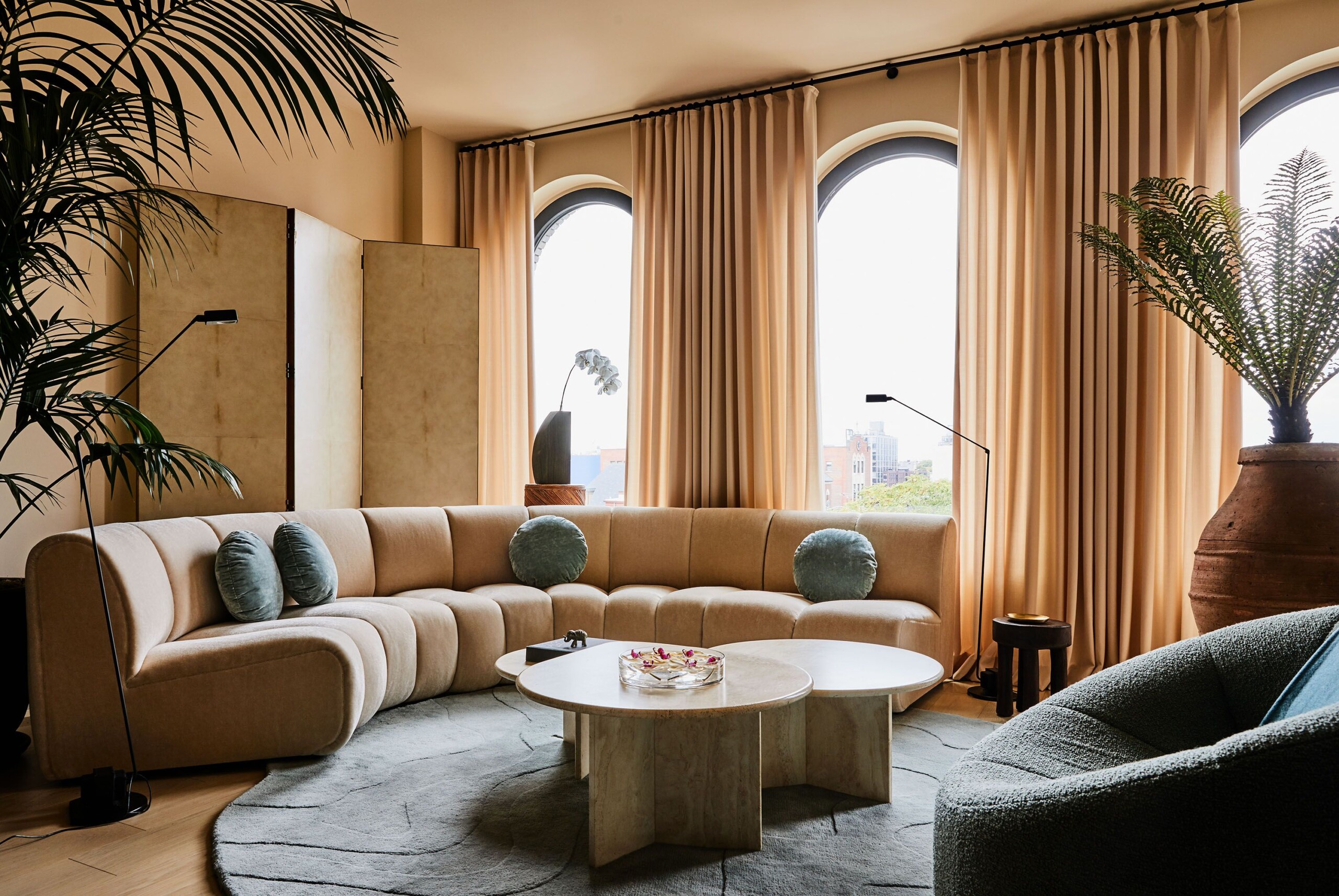
We’ve all had plenty of time over the past couple of years to really get to know our furniture intimately—flaws included. That trained eye, along with a general yearning for more sustainable options, has led to a revolt against mass production.
“Throwaway items, and the heavy use of fossil-fuel and petroleum-based materials like hard and shiny virgin plastics, seem completely wrong in this age,” says Anna Starmer, founder of the biannual forecast publication Luminary. “The era of ‘bling’ is over, as we see luxury being stated in more subtle and natural ways.”
“After decades of accepting less than standard quality production, we’re embracing craft in home design,” says Roberto Ramos, CEO of The Ideatelier. “[There’s an] emphasis on ornate decor, the reverence of wood, and specialized touches including inlay and hand-hewn details. The painstaking process of handiwork in every discipline from fabric development to accessories and hand-loomed rugs is de rigueur.”
Carpenter agrees that cookie-cutter design is falling away. “Influencing these trends is the move towards personalization and self-expression and the need to voice our values through our purchases,” she says. “Variety and variation is very exciting following this long period of being shut down—designers and innovators are taking chances again. Master craftsmanship is being more highly valued and all of this adds a wonderful warmth to where we spend our time.”
Old is New Again
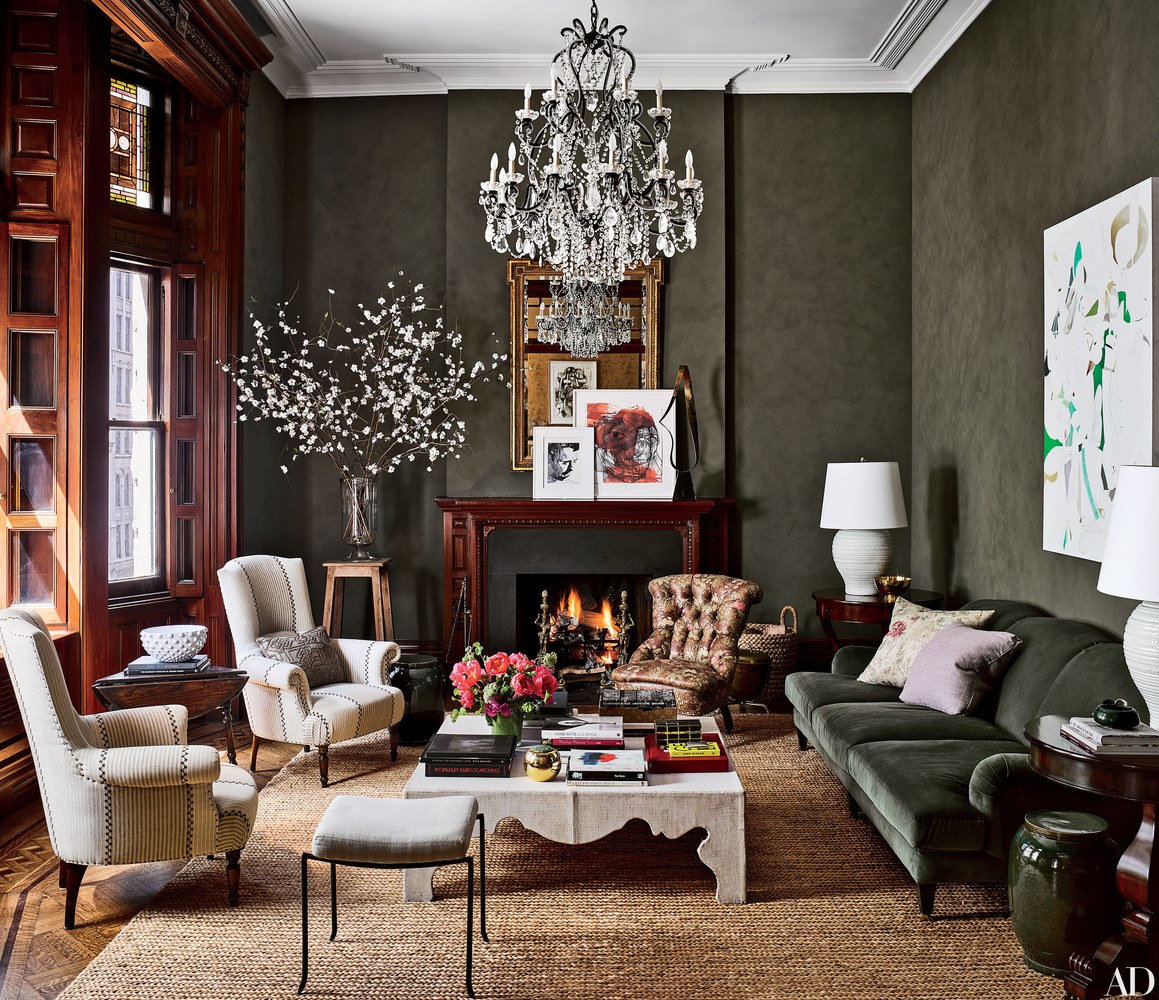
The penchant for master craftsmanship is also driven by a desire for individual expression, Smecker says. “Consumers are no longer interested in coordinated spaces and matching furniture sets. They prefer to simply incorporate unique pieces, heirlooms or thrifted finds that they love into their spaces. There is empowerment in finding and owning your personal style, especially in interiors.”
Starmer says the burgeoning interest in vintage and reused furniture is a hopeful shift. “This trend is expected to rise and rise, as we see shopping for second life goods as both a design-savvy and environmental choice to make.”
Among the most creative examples she’s recently seen are vintage shop counters and haberdashery units as kitchen islands and antique French linen sheets dyed with bark and roots to create curtains and bed throws. “The confident home designer is mixing up the styles, vintage wooden furniture with recycled stone surface added, or vintage seating recovered in modern printed fabrics,” she adds.
Biophilia Reconfigured
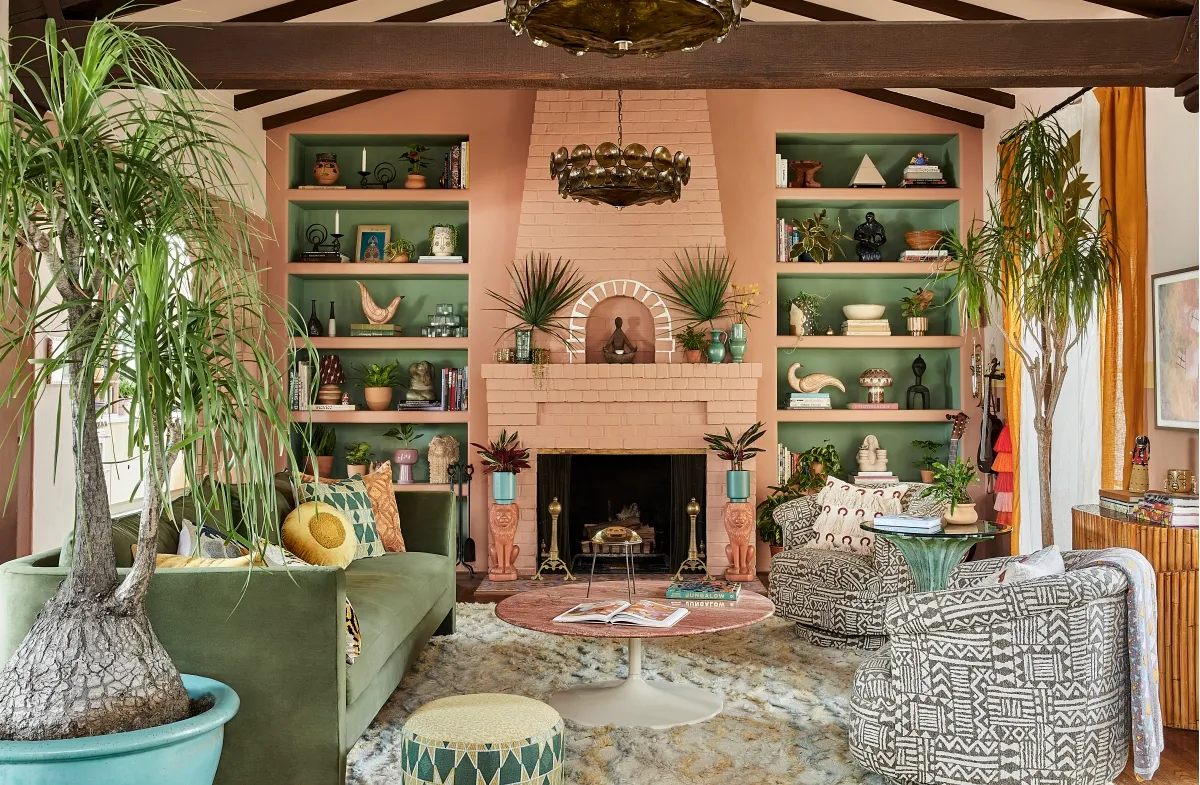
The past few years saw us clinging to as many interior greenery elements as possible, from botanical patterns to statement plants. Now, that passion still runs deep but is morphing into something different.
“[Though] biophilia is still important, this year’s trends are less inspired by lush nature but instead by the irregular and imperfect,” Smecker says. “This trend [celebrates] desert landscapes, mineral shades, mossy greens, and raw, unfinished textures.”
It’s also given rise to an exciting new material palette. “Material designers are now communing directly with the intelligence of nature,” Starmer says. “Groundbreaking brands are speaking the language of the land, discussing biodiversity and insect populations, permaculture, and the harmonious integration of fiber, farming, and food. Fabrics are being developed from orange skins and rose stems, and we are working in harmony with mycelium, clay, fungus, grape skin, dried peel, pineapple skin, brick, earth, shells, kelp, blood, pig skin, and petals.”
Maybe we won’t see it in 2023 but, perhaps, one day our decor will be dictated by our compost bins.
Are you contemplating a remodel? Want to find out how upgrades could impact the value of your home? Buyer preferences vary greatly by neighborhood and price range. We can share our insights and offer tips on how to maximize the return on your investment. And if you’re in the market to sell, we can run a Comparative Market Analysis on your home to find out how it compares to others in the area. Contact us to schedule a free consultation!
